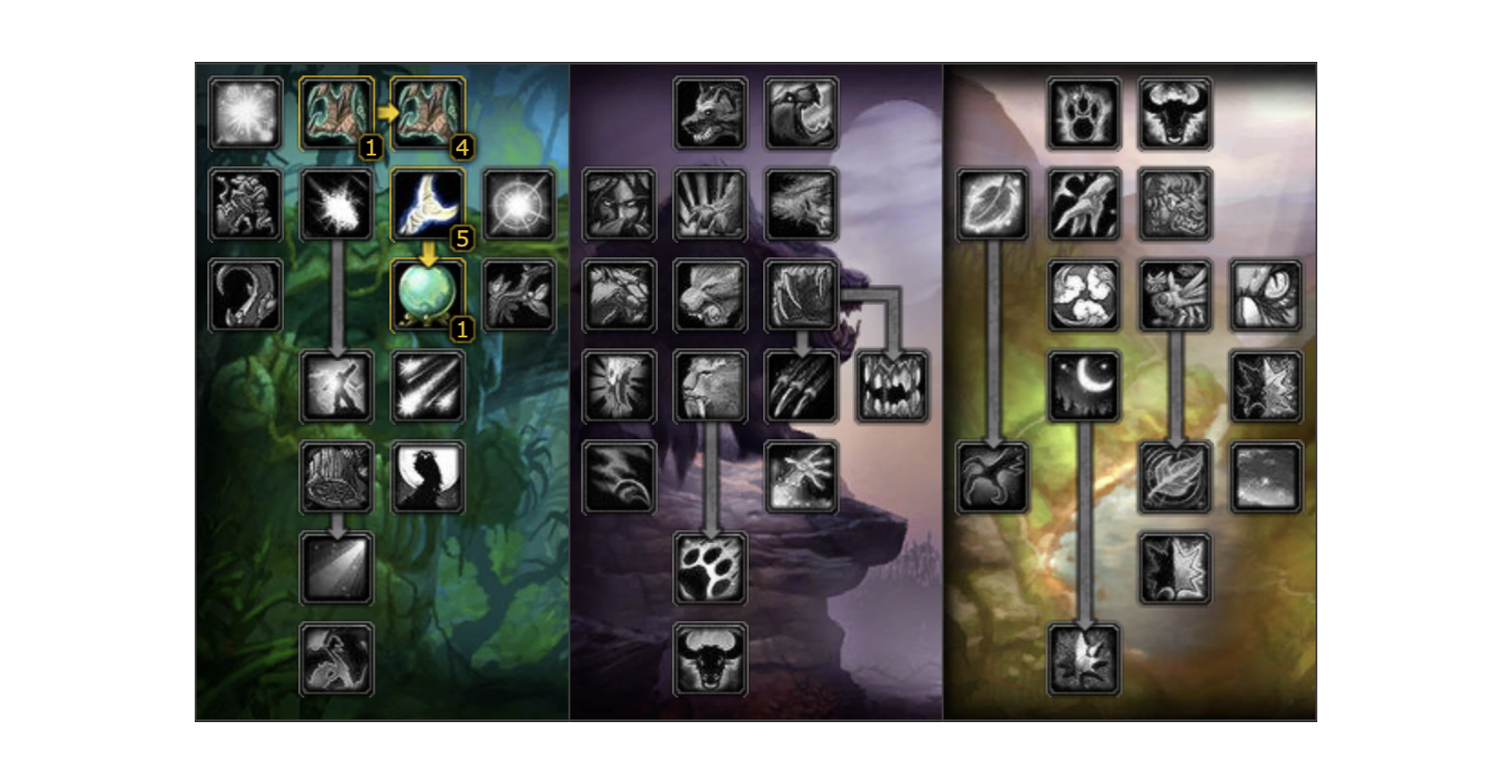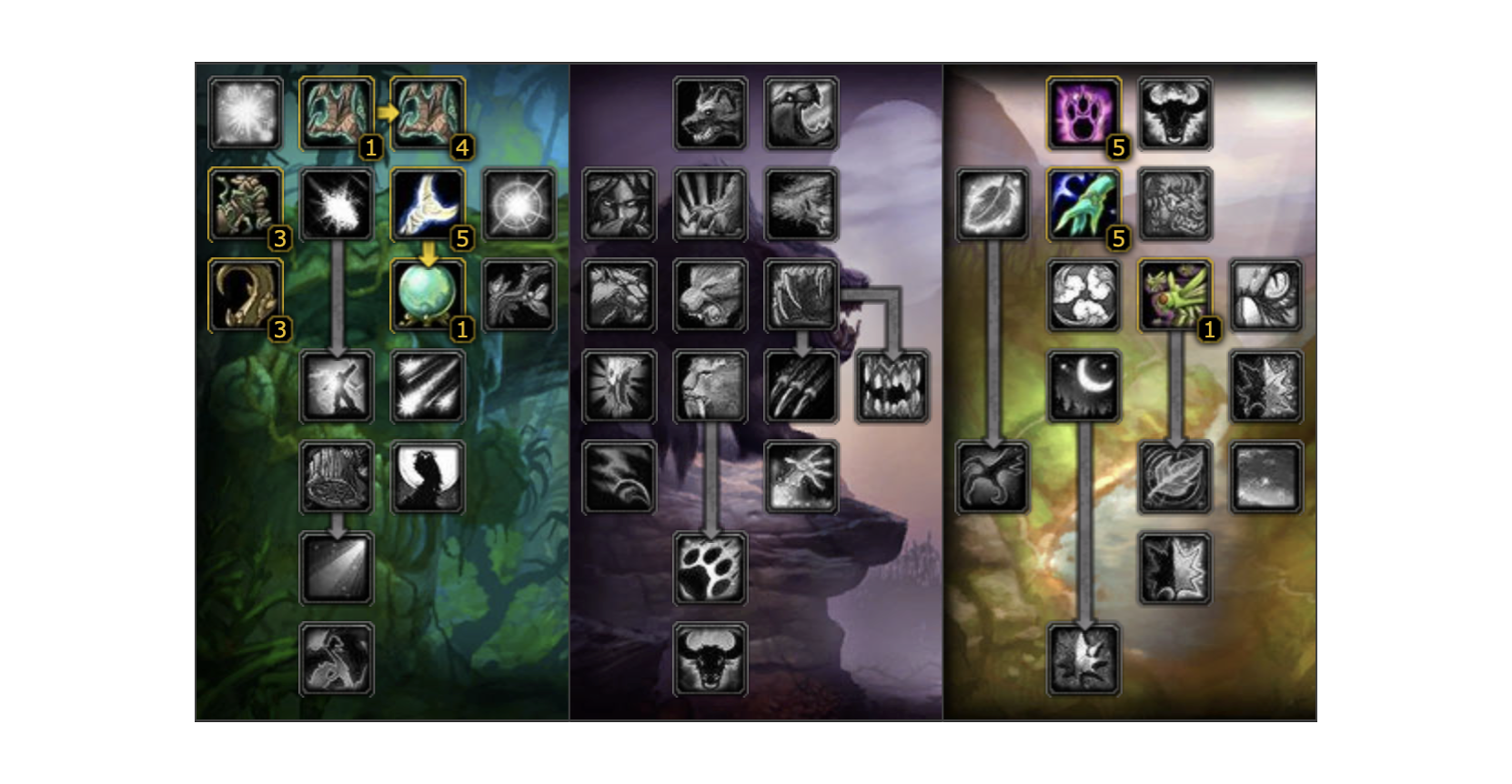The Rot Druid
The Rot Druid focuses on steady attrition and mob chaining rather than bursting them down one at a time. This playstyle is fast-paced and engaging: open on a target with damage-over-time abilities, then lock it down with Entangling Roots to let it take full passive damage while you engage a second enemy with DoTs, Thorns, and melee attacks. When the second mob dies, repeat the cycle by rooting a new target and circling back to finish the first. Auto attack uptime is prioritized to maximize Omen of Clarity procs, which are spent on extra damage when safe or on free Regrowths for reliable sustain.
Playstyle: Phase 1
The Rot Druid playstyle begins taking shape early. At level 8, you can learn Entangling Roots, one of the foundations of this approach. Even at this stage, you can pair Moonfire with Roots to safely maximize the damage of a full-duration DoT while minimizing incoming hits. This simple combination sets the tone for the Rot Druid’s method: control the fight, keep enemies at a distance, and let your spells do their work while you stay healthy.
Talents: Phase 1
We begin with Nature’s Grasp and Improved Nature’s Grasp, giving us strong peel potential when enemies close in. This ensures we avoid losing valuable auto attacks to long cast times interrupted by spell pushback. From there, we invest in Natural Weapons, since a significant portion of our damage comes directly from auto attacks. Finally, we secure Omen of Clarity — a massive boost to sustain, turning Clearcasting procs into free spell casts. While these procs can be used to increase damage output when safe, their primary benefit is improved survivability through free Regrowth casts.
Talents: Phase 2
In Phase 2, we move into the Restoration tree. First is Improved Mark of the Wild, which provides a significant upgrade to our buff — always valuable for both solo play and group utility. Next comes Nature’s Focus, a key talent for this build. Since Regrowth is one of the few cast-time spells we use in melee — and we use it often — the reduced pushback is immediately noticeable. Finally, we take the iconic Insect Swarm, which adds another DoT to our rotation while also reducing the enemy’s chance to hit us, improving survivability and reinforcing our attrition-based damage.
Phase 3
In Phase 3, we return to the Balance tree. First, we take Improved Entangling Roots, which removes spell pushback when casting Roots. This is a major quality-of-life improvement, since we often need to hardcast Roots with multiple mobs in melee when Nature’s Grasp is on cooldown.
Next, we pick up Improved Thorns, further enhancing the passive and reflective damage that fuels this build. Because the Rot Druid leans heavily on DoTs and healing-over-time for sustain, the extra damage from Thorns is a meaningful increase to overall pressure.
Finally, it’s worth noting that once Entangling Roots is free from pushback, Nature’s Grasp becomes less essential. At this point, you can consider dropping it in favor of Improved Wrath, giving you a reliable, high-DPS hardcast option when needed — a valuable offensive tool to supplement your rot cycle when appropriate.
Phase 4
description inc




